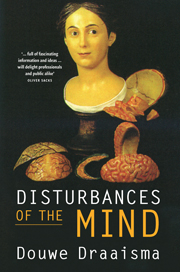Book contents
- Frontmatter
- Contents
- Introduction
- 1 Towards dusk the images appear
- 2 A tormenting round of tremors
- 3 Phineas Gage’s posthumous stroll
- 4 The Celestine prophesy
- 5 Sparks from a Leyden jar
- 6 Siberian brandy
- 7 Go to hell, idiot! Gilles de la Tourette syndrome
- 8 A labyrinth of tangles
- 9 The Mercator of neurology
- 10 The headquarters of madness
- 11 A cup of tea for the doppelgänger
- 12 Little professors
- 13 The Cardan suspension of science
- Index
- References
12 - Little professors
Asperger syndrome
Published online by Cambridge University Press: 05 March 2014
- Frontmatter
- Contents
- Introduction
- 1 Towards dusk the images appear
- 2 A tormenting round of tremors
- 3 Phineas Gage’s posthumous stroll
- 4 The Celestine prophesy
- 5 Sparks from a Leyden jar
- 6 Siberian brandy
- 7 Go to hell, idiot! Gilles de la Tourette syndrome
- 8 A labyrinth of tangles
- 9 The Mercator of neurology
- 10 The headquarters of madness
- 11 A cup of tea for the doppelgänger
- 12 Little professors
- 13 The Cardan suspension of science
- Index
- References
Summary
CB is a 15-year-old boy with a long history of behavioural problems. Although he is of normal intelligence, and in some categories, such as mathematical insight and spatial puzzles, well above normal, he attends a school for children with learning disabilities. His main handicap appears to be a lack of insight into the emotions and intentions of others. On a test that measures the interpretation of emotions on the basis of facial expression, he scored very low. He recognized the expressions denoting happiness and sadness, but not those for puzzlement or surprise. His inability to ‘read’ emotions regularly leads to conflicts with other children. In the playground, he tends to stay close to the adults.
His knowledge of social conventions is extremely limited and appears to have been consciously learned, rather than acquired naturally. His interests are monomaniacal. He knows all the prime numbers up to 7,057, and can recite the name and capital city of every country in the world. His use of language is highly concrete and literal. He does not understand metaphors. The same is true of humour.
CB’s behaviour is highly ritualized. He will only eat when the various foods on his plate do not touch each other. Colours have a strong emotional value: red is good, yellow and brown are bad. He doesn’t eat brown food. He wants his surroundings to remain constant: when the furniture is moved around, he puts things back where they were. He does not like to be touched. When his parents want to hug him, they spread one hand so that their fingertips touch his.
- Type
- Chapter
- Information
- Disturbances of the Mind , pp. 298 - 325Publisher: Cambridge University PressPrint publication year: 2009



